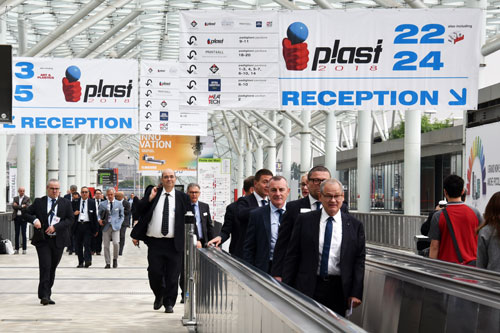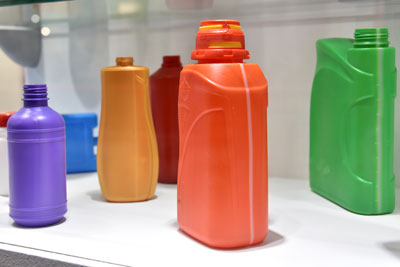All’innovazione delle tecnologie green si affianca anche un’attenzione all’impatto generato dalla fiera stessa
I grandi temi che stanno caratterizzando in modo trasversale il mercato dell’industria della plastica e della gomma saranno al centro di PLAST 2023, dal 5 all’8 settembre presso i padiglioni di Fiera Milano a Rho. Fari puntati sull’innovazione e sulle opportunità legate alla evoluzione dei paradigmi produttivi in ottica circolare che, assieme a sostenibilità e risparmio energetico, rappresentano i temi chiave di PLAST 2023.
Temi che saranno centrali non solo per l’offerta espositiva, ma anche per la realizzazione stessa della manifestazione, che per questa edizione punta a raggiungere migliori risultati in termini di sostenibilità. Parte di questo processo è possibile grazie a Fiera Milano, ormai da tempo impegnata in un percorso costante di riduzione dell’impatto ambientale e delle emissioni di CO2 generate dalle manifestazioni che si svolgono nel proprio Quartiere, attraverso il controllo delle operazioni logistiche, la corretta gestione dei rifiuti e una offerta di ristorazione sostenibile.
Promaplast, organizzatore di PLAST, vuole dunque essere esempio virtuoso di questa sensibilità e aderire ai canoni di sostenibilità oggi considerati un obiettivo improrogabile. Tra gli aspetti che caratterizzano questo approccio emerge, per esempio, la disponibilità di allestimenti che rispettano i canoni dell’ecodesign e di servizi legati alla ristorazione, come quelli proposti da Fondazione Banco Alimentare, attenti a queste tematiche.
Non solo, per la prima volta Promaplast offre la possibilità di avviare un percorso rivolto alla Carbon Footprint pensato anche per poter arrivare in tempo a comunicare al PLAST 2023 i primi risultati aziendali raggiunti. Il calcolo della Carbon Footprint, infatti, oggi è il metodo più immediato e universalmente accettato per comunicare e rappresentare l’impatto ambientale di un’organizzazione. Il progetto adotterà i parametri identificati dall’Ipcc (Intergovernmental Panel on Climate Change, organismo che opera sotto l’egida delle Nazioni Unite) applicando i protocolli riconosciuti a livello internazionale (GHG Protocol e ISO 14064). Tradurre la propria attività in emissioni di anidride carbonica equivalente in atmosfera è indice di attenzione all’ambiente ed evidenzia la volontà di aderire ai canoni di sostenibilità oggi considerati un valore aggiunto.
Tema quello della sostenibilità che insieme all’innovazione tecnologica pervaderà i 6 padiglioni che comporranno la fiera, all’interno di un’offerta espositiva che spazia dai materiali ai processi di lavorazione, dai prodotti finiti ai servizi, alle soluzioni più avanzate sviluppate dai costruttori di macchinari, attrezzature, ausiliari, e stampi per la lavorazione di plastica e gomma.
Dopo aver lanciato, nel maggio del 2022, la mostra-convegno GREEPLAST – focalizzata proprio sugli aspetti di sostenibilità dei materiali, delle tecnologie e dei processi di trasformazione per la plastica e la gomma – anche PLAST 2023 ospiterà l’eccellenza dell’innovazione in chiave green: dai materiali sempre più sostenibili ed eco friendly ai macchinari dal consumo energetico ridotto e capaci di trasformare i polimeri bio-based e riciclati; dai processi che consentono di utilizzare una minore quantità di materia prima mantenendo comunque un elevato livello di performance sino agli impianti di selezione e riciclo.
Il calendario degli eventi collaterali in fiera sarà poi momento di approfondimento e confronto sullo stato dell’arte e sulle sfide da affrontare per evolvere verso un modello di economia sempre più sostenibile.
Nel frattempo, prosegue il tour di presentazione di PLAST con la partecipazione ad alcune fiere di settore come EQUIPLAST di Barcellona, PLASTEXPO di El Jadida in Marocco e Saudi PPP di Riyadh.
In occasione della specializzata marocchina, il tema della sostenibilità e, più nello specifico, del riciclo delle materie plastiche post-consumo è stato approfondito nel corso di un seminario tecnologico, svoltosi oggi, giovedì 8 giugno, organizzato da AMAPLAST (l’Associazione dei costruttori italiani di macchine e stampi per materie plastiche e gomma, che supporta PLAST), in collaborazione con ICE-Agenzia e Fédération Marocaine de Plasturgie. Un esperto italiano ha illustrato le tecnologie più recenti e innovative in tale ambito, a livello di impianti e processi, presentando agli operatori locali i trend e le prospettive di mercato, gli investimenti richiesti per dotarsi di soluzioni adeguate al programma di “transizione green” intrapreso dal Governo del Marocco.
Il futuro dell’industria della plastica e della gomma è dunque a Milano dal 5 all’8 settembre, in un evento dove sono presenti ad oggi oltre 1.200 espositori e sono attese delegazioni ufficiali di buyer da almeno una trentina di paesi. Aperte le preregistrazioni per gli operatori professionali che vogliono interagire con un’offerta specializzata e risposte trasversali alle proprie esigenze in termini di prodotti, tecnologia, soluzioni e business.
PLAST 2023: focus on sustainability
Innovative green technologies are complemented by concern for the impact of the fair itself
The major themes that are characterizing the entire plastics and rubber industry and its market will be a focus at PLAST 2023, scheduled for 5–8 September at the Fiera Milano fairgrounds in Rho. The spotlight is on innovation and opportunities offered by developments in production paradigms in a circular-economy perspective that, together with sustainability and energy savings, represent the key themes at PLAST 2023.
These themes are central not only in the products, services, and systems on display, but also as regards the fair itself, this year aiming to achieve the best performance in terms of sustainability. A part of this process has been made possible by Fiera Milano, which has taken a sustainable event management system approach involving control of logistics, wastes, and food services to reduce the environmental impact, including CO2 emissions, associated with the organization and conduct of PLAST 2023.
Promaplast, the organizer of PLAST, aims to represent a virtuous example of this concern and to observe the core rules of sustainability that are now considered an objective that can no longer be postponed. One of the aspects characterizing this approach is installations that meet standards of ecodesign and food services such as those put forward by the Fondazione Banco Alimentare, which is closely attuned to the associated issues.
And that is not all. For the first time, Promaplast offers the possibility of implementing a carbon footprint assessment process in time to allow companies to announce their initial results already at PLAST 2023. The calculation of a company’s carbon footprint is the most immediate and universally accepted method for representing and communicating the environmental impact of an organization. The process uses the parameters developed by the United Nations Intergovernmental Panel on Climate Change (IPCC), applying internationally recognized protocols (GHG Protocol and ISO 14064). Expressing a company’s activities in terms of atmospheric carbon dioxide equivalents is a measure of concern for the environment and demonstrates the commitment to meeting the core rules of sustainability that are now considered an added value.
Together with technological innovation, the theme of sustainability will pervade the six halls of the fair, part of an exhibition that covers everything from materials to processing, from finished products to services and the most advanced solutions developed by manufacturers of plastics and rubber processing machinery, equipment, and moulds.
After having introduced in May 2022 the exhibition-convention GREEPLAST – focused on the sustainability of materials, technologies, and transformation processes for plastics and rubber – PLAST 2023 too will showcase excellence of innovation in the key of green: from increasingly sustainable and environmentally friendly materials to machinery with reduced energy consumption for processing bio-based and recycled polymers and from processes that make it possible to use less raw materials without compromising on performance to sorting and recycling systems.
The calendar of side events will be an opportunity for further depth and exchanges on the state of the art and the challenges to evolving towards an increasingly sustainable economic model.
In the meantime, the PLAST presentation tour continues with a presence in a number of relevant fairs, including EQUIPLAST in Barcelona, PLASTEXPO in El Jadida (Morocco), and Saudi PPP in Riyadh.
On the occasion of the specialized exhibition in Morocco, the theme of sustainability and, more specifically, recycling of post-consumer plastics, was developed in a technology seminar on Thursday, 8 June, organized by AMAPLAST (Italian Plastics and Rubber Processing Machinery and Moulds Manufactures Association, which supports PLAST) in collaboration with ICE-Agenzia and the Fédération Marocaine de Plasturgie. An Italian expert illustrated the most recent and innovative technologies in this area on the level of systems and processes, presenting to the local operators market trends and prospects and the investments required to implement solutions meeting the needs of the “green transition” undertaken by the Government of Morocco.
The future of the plastics and rubber industry is thus on display in Milan from the 5th to the 8th of September in an event for which over 1,200 exhibitors have already reserved their stands and official buyer delegations are expected from at least thirty countries. Early registration is open for professional operators who wish to engage with specialized products, systems, and services and full-spectrum responses to their needs in terms of products, technology, solutions, and business opportunities.












